How an interest that started almost 50 years ago manifested into a book on patent bottle closures
The back story to Saving the Fizz
09 July 2017
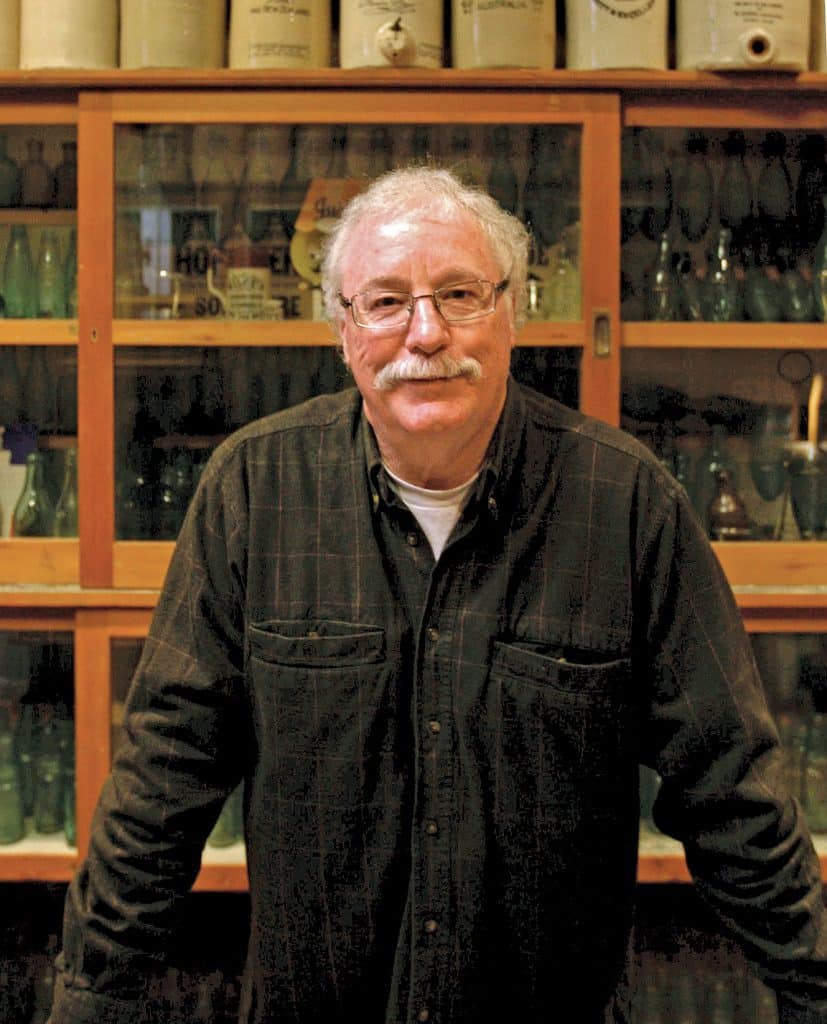
Portrait of David Jones who collects antique glass and stoneware for Collector column. Photograph by Tamara Dean
My name is David Jones, a name that has always brought some comment as it is also the name of a famous 180-year-old department store in Sydney, Australia, where I also live. No, I am not related and I cannot give you a discount.
In Australia as elsewhere in the world 180 years ago, men, and a few women too, were wrestling with a better way to retain the effervescence of bottled mineral waters and carbonated and fermented beverages – something that would represent an improvement on the old wedged cork then used. Almost certainly all also hoped that their invention was going to make them very wealthy but only a relatively few succeeded.
From around 1968, I have been a bottle collector and have always had a fascination for the history that was attached to the items I acquired. That interest kindled a 30-year project that culminated in 2009 with the self-publication of Thirsty Work: A History of the Sydney Soft Drink Industry (www.thirstywork.com.au). At 1040 pages, it covered the social and industrial history of some 560 individuals and companies associated with the industry in Sydney, from the earliest days of convict settlement until after WWII and, in some cases, beyond.
I retired from a life-long career in advertising in 2003 and six years later with Thirsty Work completed, I looked for my next project. As a collector I ended up specialising in soft drink bottles from Sydney and its suburbs among whose numbers were a score or more different patent bottles. Oddly shaped bottles with fascinating closures. I wanted to find out more. Who was responsible for such fanciful contrivances and when were they invented? Where did they fit in the evolution from the humble cork?
My search led me to the discovery that although there were a few books on the subject, all were somewhat parochial, incomplete, mostly out of date or, in some very early publications, just plain wrong.
My idea was to not only set the record straight, but to produce a work whereby a collector, historian or archaeologist would have a handy field guide whereby one could easily search for and quickly identify a particular patent closure. Based on my then limited knowledge I first envisaged this could be achieved in not more than around 100 or 150 pages. However, having once started I was on a steep learning curve and realised that I would have to revise my estimate to around 300 pages. But little did I realise just how many patents were out there worldwide and the work steadily grew to 624 pages! Hardly a handy pocket field guide but nevertheless one volume that included the full gamut of closure types; from the humble cork to internally-stoppered bottles, ledge-mouth stoppers, long-plug stoppers, spindle and spring wire stoppers, swing wire stoppers such as the “Lightning”, internal and external screw closures, the crown cork seal and its scores of imitators, through to interactive devices and after-market re-sealers. And, just for good measure, a few enigmatic oddities thrown in.
So what does fill a book of 624 pages?
Measuring 310mm x 220mm (12.5” x 9”), the hardcover, full-colour, book features some 2,500 patents and is richly illustrated with over 4,925 images.
It is broadly arranged into types of closures as briefly outlined above. In each section the closures are listed roughly chronologically, each with its patent number and date and who patented it. In almost all cases, the original specification drawings are reproduced and, where they exist, photographs of bottles and closures are also included. The text explains how the patent worked, a brief history of the patentee, the closure’s success, or failure, and any other relevant information.
For example, did you know that the inventor of the wire swing stopper was a guitar-playing, Swedish libertine who was a trained watchmaker but, apparently through a series of fortunate and somewhat controversial events, in January 1875 designed and patented the swing stopper? One that would later evolve into the famous “Lightning” stopper!
Why were Hiram Codd’s globe-stoppered bottles accepted worldwide except in the United States where they only received scant approval among bottlers?
Why did Charles Hutchinson’s spring wire stopper rule supreme among soda water bottlers in the United States?
Henry Barrett who was originally from Jersey in the Channel Islands has long been credited as the inventor of the internal screw stopper in 1878. However, a Scottish merchant designed a method by which internal screw threads could be made in bottles as early as 1843. And, Englishman Thomas Kendall patented a bottle whose neck was formed with an internal screw thread to take a compressed cork screw stopper. But the first internal screw stopper known to have reached production was that of American Amasa Stone in 1861 – 17 years before Barrett!
The man responsible for inventing the famous safety razor in 1904, King Gillette, was also granted patents for several caps that could also be used on what would become the ubiquitous crown seal bottle. Its original cork seal cap made its 1892 inventor William Painter a very wealthy man and to whom bottlers have been forever grateful.
Which well-known New York patentee was found shot dead in his bath?
Who was the world’s most prolific inventor?
What city had the title of being the patent capital of the world?
When was the crown cap can introduced?
What possessed Londoner Anton Schon to produce his oddity?
What’s the difference between the ledge-mouth internal stoppers of Léon Vallet and John Lamont?
Where was the earliest known external-screw thread bottle found?
The answer, I am sure, will surprise you as will the answers to these questions and many more. But, to discover them, you will have to buy Saving the Fizz.
So, how does that whet your thirst?
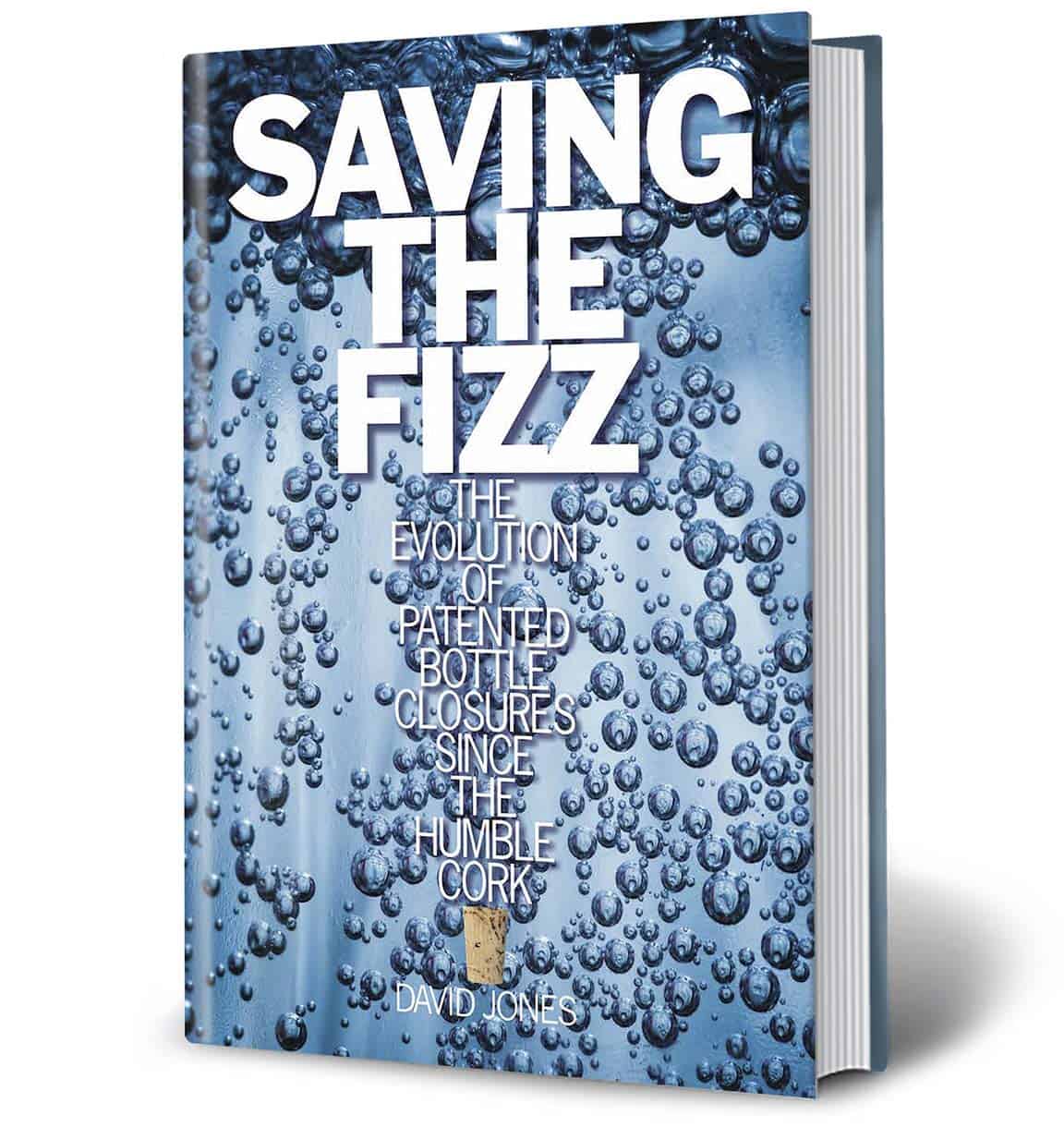
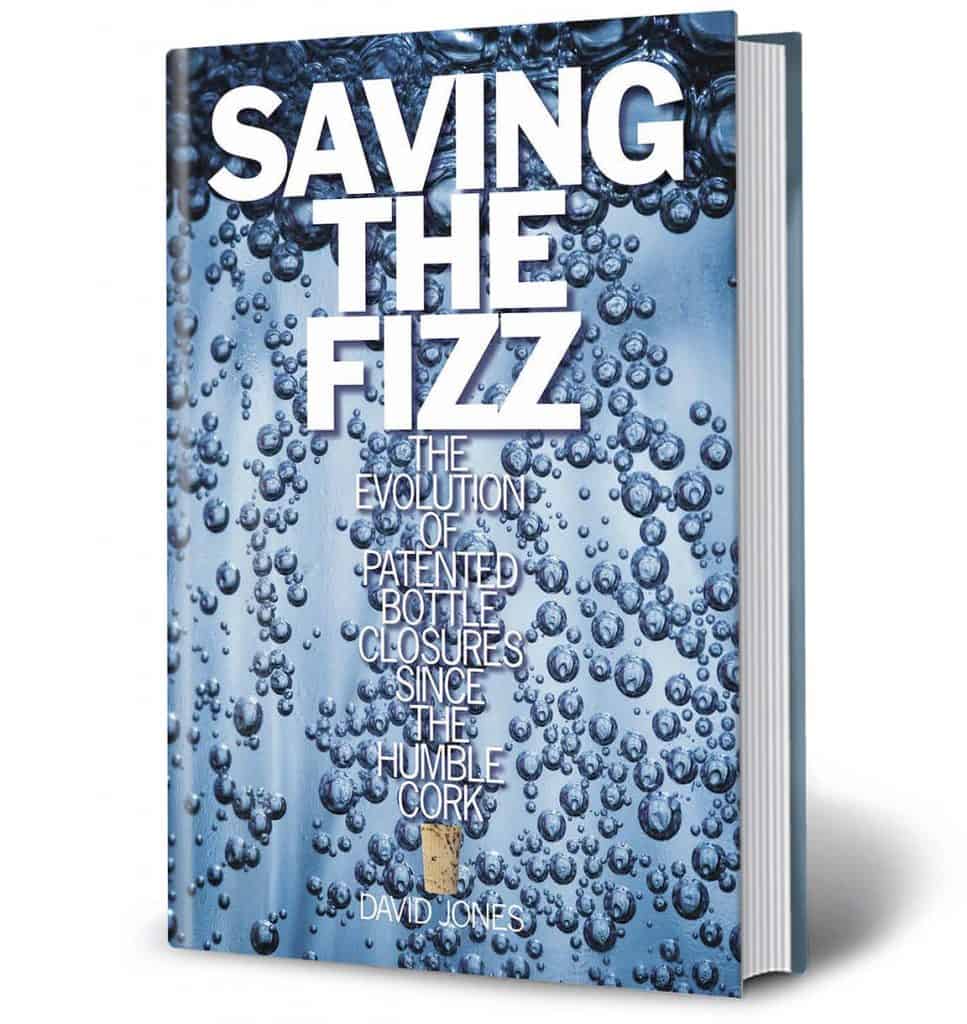

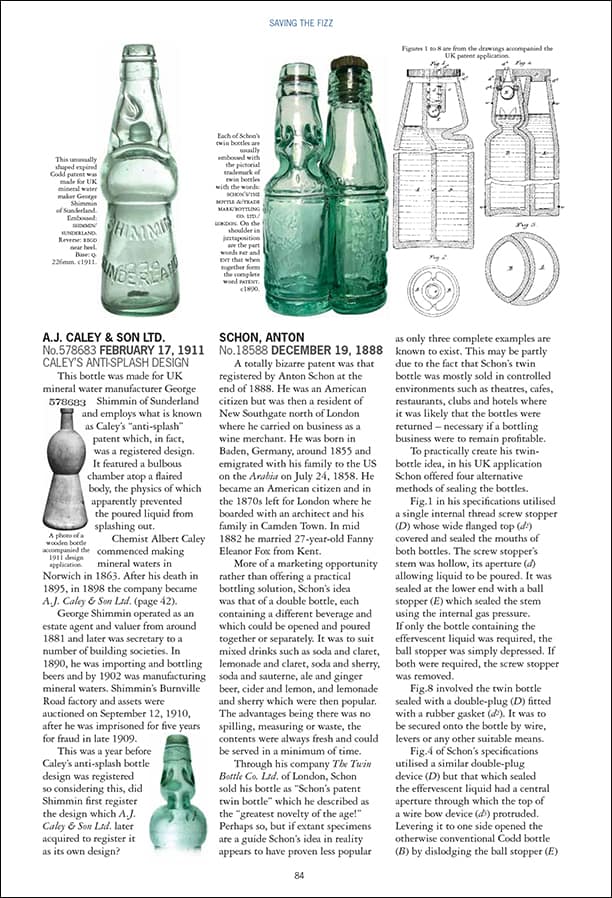

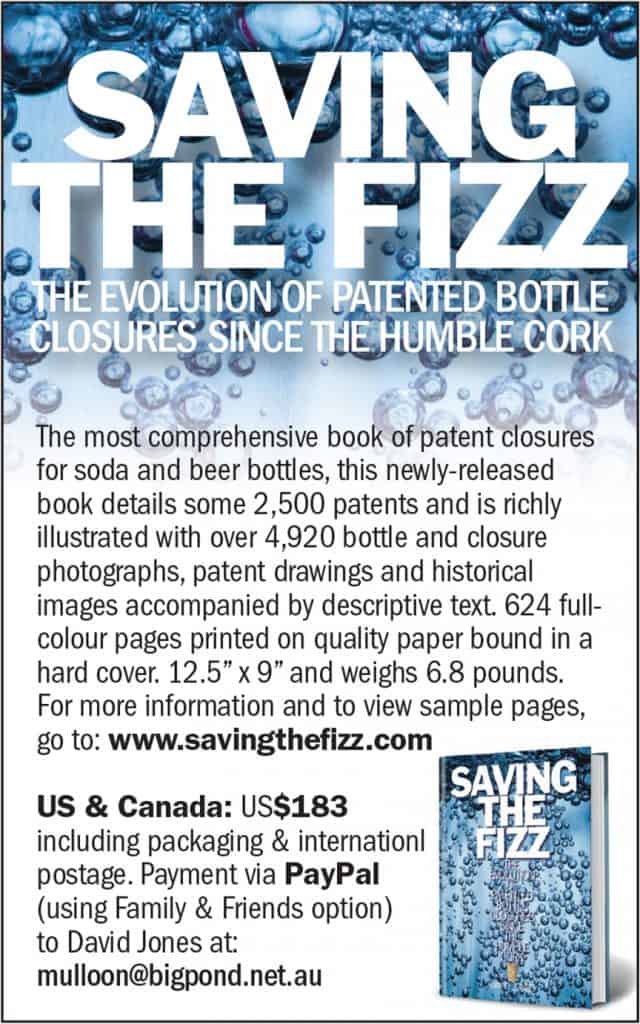
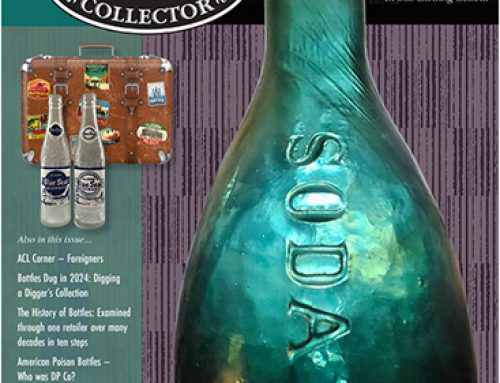
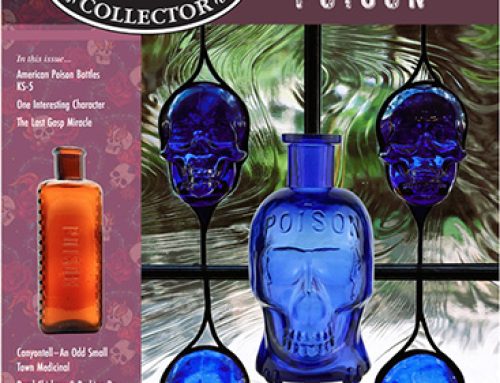
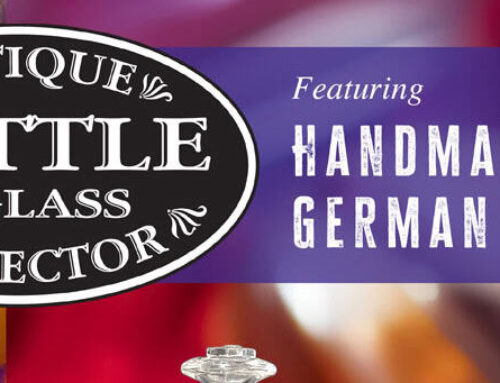


Leave A Comment
You must be logged in to post a comment.